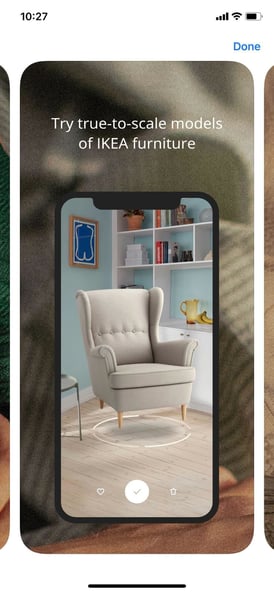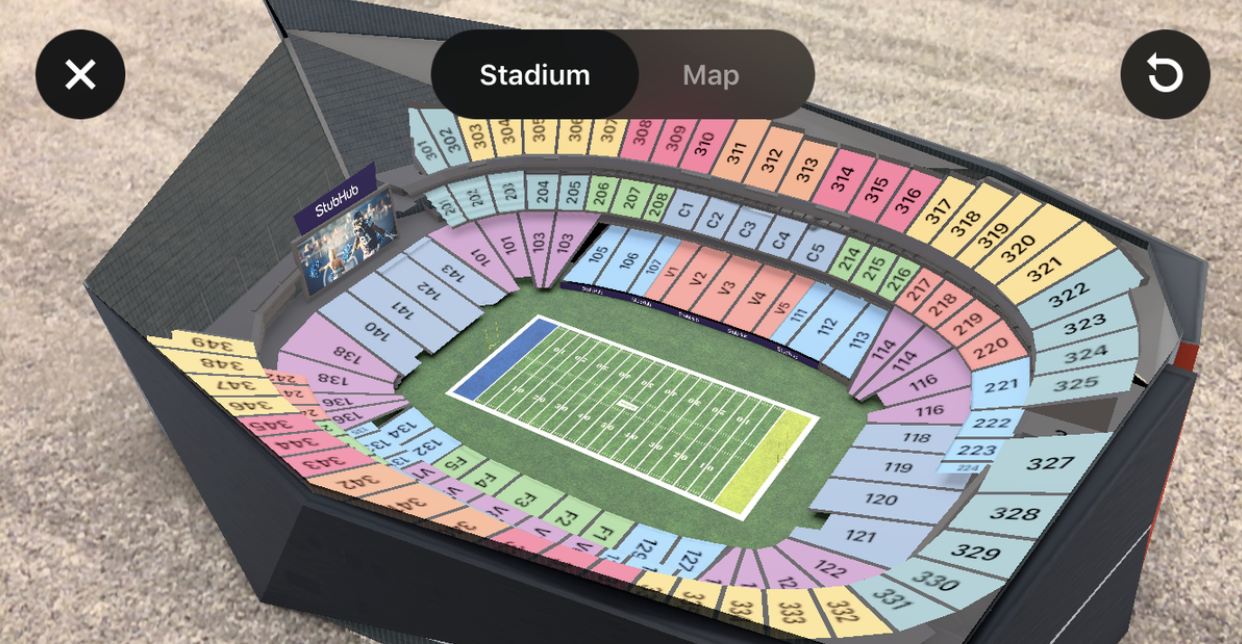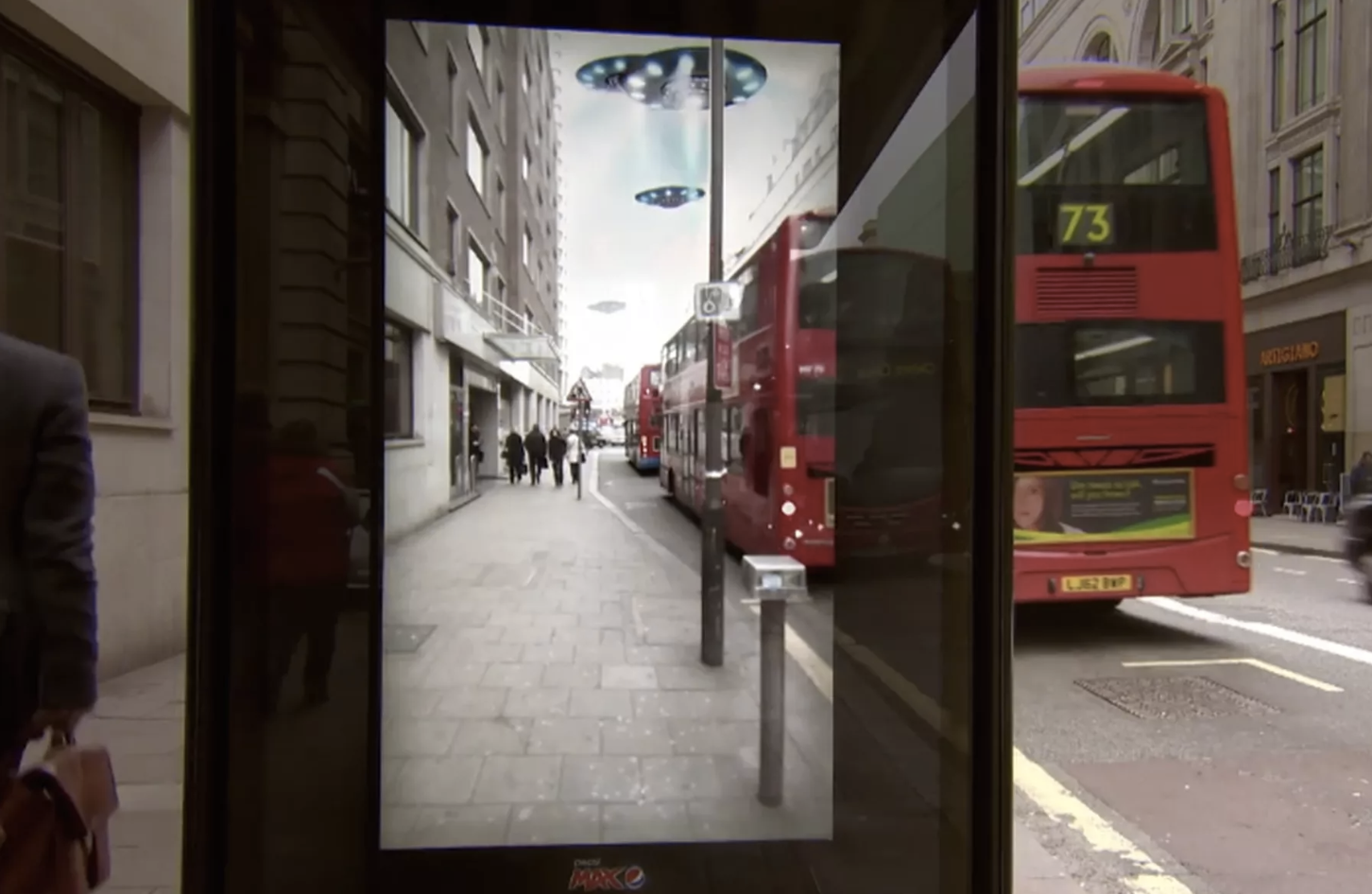8 Innovative & Inspiring Examples of Augmented Reality in Marketing
The Augmented reality, virtual reality, and mixed reality market size worldwide is expected to jump by more than 220 billion USD between 2021 and 2028. Tim Cook, Apple’s CEO, has said that AR will one day be as important in our everyday lives as “eating three meals a day.”
AR has also made its way into different industries, including marketing. In fact, many people use AR experiences from brands every day without even realizing it, like picture and video filters on social media.
If you’re wondering how AR plays into marketing, this post will look at eight companies that have used AR in innovative and inspiring ways that you can use to brainstorm and execute your own strategy. 
Augmented Reality Examples
Augmented Reality for Product Marketing
1. Pokémon GO
Pokemon GO took the world by storm in 2016, and it is one of the most notable AR experiences.

In the app, users get notified of eligible Pokémon in their area and receive directions to find and catch them. When they come across a Pokémon, the character is superimposed over the real-life location of the app user — an AR experience.
The game is built around catching the available Pokémon before anyone else can, which is why, when the app first came out, people would gather in groups to try to be the first to capture the character.
2. Home Depot
Decorating a home isn’t easy — how do you know if you’ll actually like the yellow paint that looks beautiful online but might be too bright in your bathroom? What if that coffee table doesn’t fit in your living room as you’d hoped?
In 2015, Home Depot released its Project Color app, which uses patent technology to show users what a paint color will look like in their home. The AR technology considers lighting, objects, and shadows in the room, so you can see how that yellow shade will look in real life. If you don’t trust your judgment, you can also share images from the app on social media to get a friend’s opinion.
Home Depot isn’t the only home furniture store to use AR to create value for their users — IKEA has similar AR technology built into its app.
3. IKEA
IKEA uses AR to help shoppers test and visualize products in their own space before making a purchase.
It offers multiple tools for customer needs, like the IKEA Place app that superimposes to-scale models of furniture in real-life rooms or the IKEA home planner that helps people build furniture sets, like kitchen cabinets, to ensure they’re satisfied before placing an order.

4. Sephora
There’s a reason many people don’t buy makeup products online — it’s impossible to know if you’ll like the lip color or foundation coverage if you don’t try it on in-store. Sephora understands this struggle and is known for allowing in-store visitors to test products on themselves before buying them, but not everyone may be comfortable doing so.
For those not as comfortable, it offers an in-store virtual try-on kiosk where visitors can see how products look on themselves to ensure they’re satisfied.
5. StubHub
Augmented reality enables you to visualize and interact with a space — two critical functions when choosing how much you’re willing to pay for a stadium seat.
For Super Bowl LII, StubHub introduced an AR feature on their mobile app that allowed ticket buyers to see a virtual 3D model of the U.S. Bank Stadium and nearby parking garages and concession stands. This enabled potential buyers to visualize their full experience before purchasing and minimized the risk of paying for a subpar seat.
StubHub’s reliance on AR solved a common customer problem — as StubHub CTO Matt Swann points out, “We’re solving for real pain points, not just tech for the sake of tech. For many people, it’s not an event you just show up for; it’s kind of a bucket list item.”
For out-of-towners, the ability to virtually compare different seat locations adds comfort for hesitant buyers.
6. Social Media Filters
Filters are AR features that social media users use daily on different apps, from TikTok to Instagram to Snapchat. Over 250 million people use an AR feature on Snapchat every day, and creators on the platform have built over 2.5 million AR lenses.
With filters, users simply take a picture of themselves or something of interest, and a filter is superimposed over the image, whether it’s a funny pair of sunglasses or changing the color scheme of a scenery.
AR and Experiential Marketing
7. Netflix
To market season four of Stranger Things, Netflix launched an in-person experiential marketing and AR experience called the Stranger Things Experience. Fans visit an in-person location and participate in an immersive experience related to the show, where they play games with AR features that help them feel like they are in the Stranger Things world.
In the past, Netflix has advertised other Stranger Things seasons with AR experiences like Instagram filters that place users within the universe, all from the comfort of their homes.
8. Pepsi
In 2014, Pepsi installed AR technology in a London bus shelter, making it appear like a lion, UFOs, flying saucers, and other objects were headed straight for Londoners.
The production showcased Pepsi’s playful personality and provided the audience with an exceptional experience. Afterward, a video of the bus shelter’s AR technology attracted over six million views on YouTube — making it one of YouTube’s most viewed advertising campaigns.
Pepsi’s campaign highlights the effectiveness of AR when a company truly knows its audience. Pepsi didn’t need to use AR to advertise its products — instead, it trusted its consumers to appreciate the surreal experience and naturally share the story with friends, creating buzz around the brand.
The State of AR in Marketing
While incorporating AR into marketing is still new, marketers can still note how these brands creatively incorporated technology into their marketing strategies.
Ultimately, as the media landscape changes and technology gets more advanced, marketers at businesses of different sizes might have more opportunities to implement technology. And, when they do, they’ll need to think creatively and innovatively about how they invest in it.
![]()





